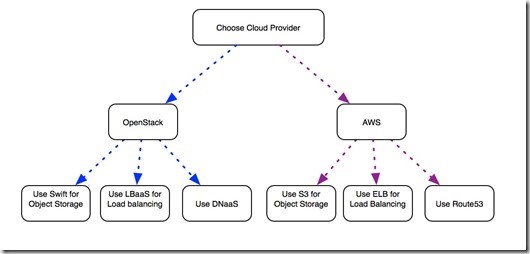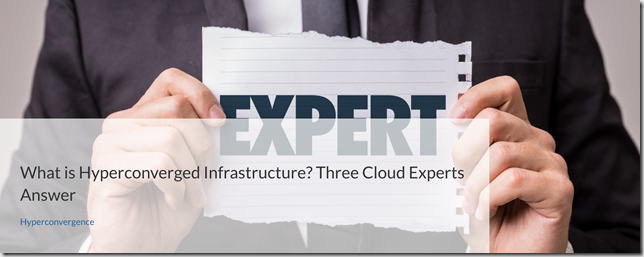This past week - I have been working a lot with an account team to provide an RFP for a potential customer, and it is quite clear that sometimes the sales teams do not understand what an As-A-Service solution means, and even more so - from the potential customers list of requirements that was part of the RFP - they have absolutely no idea either.
A colleague of mine came up a great way of explaining what aaS is and how to explain to your potential customers.
You buy a car - for arguments sake - let’s say it a Lexus LS.
When you buy the car - you know what you are getting. You get:
- 4 wheels
- You know the dimensions of the wheels 235/50R18
- You know what the tire pressure needs to be.
- A V8 Engine
- It goes from 0-50 mph in 5.4 seconds
- The maximum speed of 130 mph
- Your car can hold 22.2 gallons of fuel.
You are presented with a manual of how you should operate the car, how to take care of your car - and what you can do with your car, how many people can sit in it, when it should be serviced.
And that is your car.
Once it is yours - then you can abide by the terms of the usage - and if there is anything wrong with your car - then you will take to the garage to be fixed - it is under warranty, and if you have used it in accordance to the instructions - and something went wrong, then it will be fixed.
Depending on the terms agreed upon during the purchase - you could be guaranteed a replacement car during the time it is in the shop, you might be entitled to a free taxi ride to work and back , maybe even a chauffer that will drive you wherever you want to go - it all depends on the terms that were agreed upon at the time of purchase and what the car vendor agreed to provide.
But because the car is yours - you can choose to not adhere to the instructions provided by Lexus, and you can choose to modify your car.
You can:
- Use rocket fuel to make the car go a lot faster maybe 250 mph (or blow up - who knows)
- You can change the tires - to a bigger / better / more durable ones
- You can add an external fuel tank to ensure that you can hold 500 gallons of fuel.
- You can tweak the onboard computer to enhance the experience
- Shock any potential thieves when they try to break into the car
- Install a crystal ball for an awesome disco effect.
What is important to understand - is your car could perhaps stop working - or alternatively - it could become a better, faster, more attractive, more reliable car than it ever could have been out of the box.
Will Lexus fix anything in the car after you modified it - or did not follow their instructions? Hell no. If that is a risk you are willing to take - then you will.
You will not be able to demand from Lexus to put all those changes into their car - and expect them to comply. You might be willing to say - that you will pay Lexus to make all those modifications for you - and there may be cases where they will actually accept the proposal - it is all a question of financial viability.
It Lexus come to the conclusion that all that it takes to install a crystal ball in your car is a few screws and one days work - then it is no biggie - and they will charge you (probably through the roof) for it. But if they decide that in order to add the capability of storing another 500 gallons of fuel in the car - they need to make modifications to the Chassis and re-inforce the axles, use bigger wheels, put in a bigger engine - and in order for all that to happen they need to modify their whole production line - then it is not going to happen. No matter how much money you are willing to pay - there are too many things that need to change. They may say that they can incorporate your requests for modifications into our next model that will be out in a few years - if they see there is enough market demand for such requests - but at the moment the car is, what the car is.
You cannot come to Lexus and say - that before I buy your car - I would like to see that your engineering plant is compliant with all the regulations that are enforced on me by the country that I live in.
- The car parts cannot be shipped out of the country for repair
- The engineers that take care of my car - will only be from country X
- Any diagnostic information that is collected from the car cannot leave the country - even for diagnostic purposes
- Anyone that has ever had anything to do with the manufacturing process (from engineers, to IT people, to janitors, to CEO’s and even 3rd party suppliers) need to have a secure and compliant process that ensures their emails are secure and encrypted, and stored for 7 years.
Coming to Lexus with such demands - will probably get you thrown out on your butt - and barred from ever entering another showroom again.
It is obvious - that your demands (even though they might be required by your own regulatory rules) are ridiculous.
Again - you are buying a car.That is the product, it has a set of KPI’s (Key Performance Indicators) that you expect to be fulfilled - and if not - you can demand compensation - or resolution to your satisfaction because that is what the seller.
So how is this connected to aaS solutions?
Think of them in the same way - but instead of buying a car - it is a using a service.
The service will have specific KPI’s, terms and SLA’s - that the provider needs to abide by. You as the buyer will have set of rules of how you can use the service - what you can do with it.
If you decide to deviate from those set of instructions - you may - but you cannot raise any complaints to the other side that it is not doing what you want it to do. It is possible that by daring to think out of the box - you will able to create a product or a service of your own, that has never been built, something that everyone wants - and you now have the most successful and amazing product event since sliced bread.
Take Netflix for example. They built something on top AWS - that no-one ever thought would be possible. They have found ways to make use of the underlying infrastructure that no-one has ever done before. They have developed tools, processes and an organizational culture around their innovation and brought it to a place where it is revered as the Cinderella story in the cloud world today.
Were they able to come to AWS to say - we would like you to see this feature implemented in the services you have today, we want a new region? Yes of course they were able to. Were they able to get what they wanted? I assume sometimes yes - and other times they were not.
Did they come to AWS and mandate that before they would purchase their services - all AWS would required to adhere to Netflix’s regulatory requirements? That every host that served any of the instances that they provisioned - would have to send its logs to a central log server that Netflix hosted on-premises? 
Maybe they did. Maybe they did not. But I assure - even if they did - the answer they would have received from AWS would be, “Go and take a very long walk, off a very short cliff.”
If I were on the AWS side of things, my answer have been, “We provide a service and this is how you can use it - this is what we provide and these are the KPI’s we will provide. You want to use it - go for it. We are not going to change the way we do business just because you want us to. If we see that there is a good reason to open up a new region in a new continent - we will - we cannot commit to a timeframe, but this is what the product is .Take it or leave it.”
I would like to thank Oliver Moore for inspiring me to write this post.



